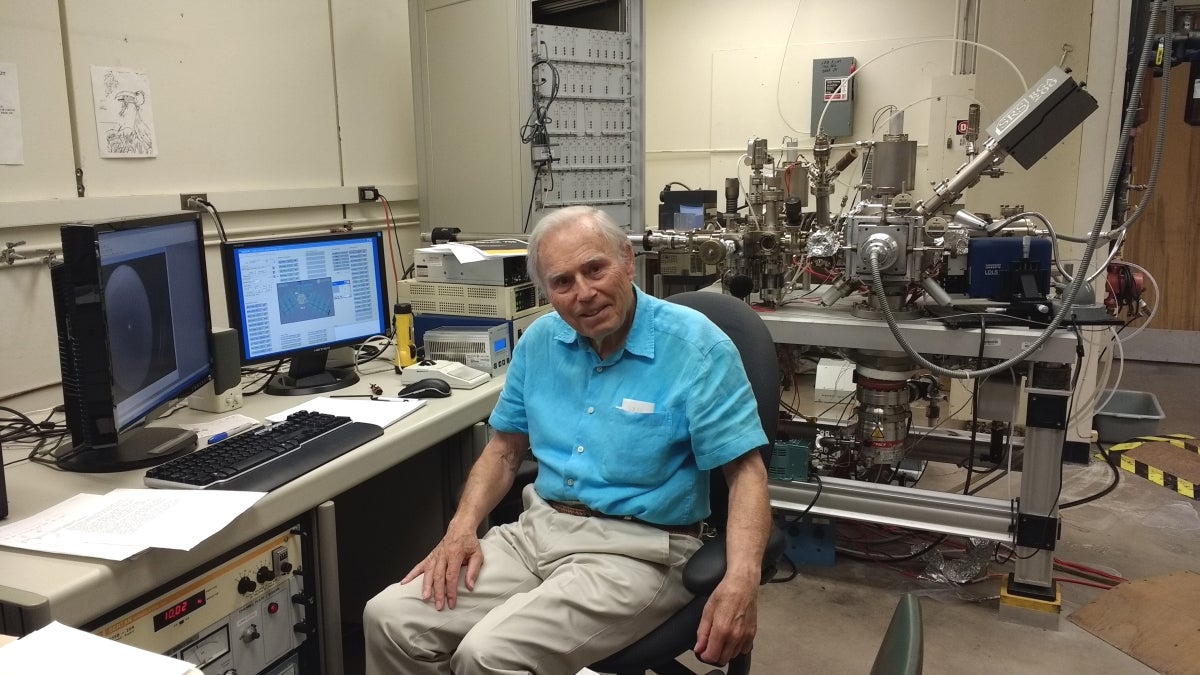ASU emeritus professor celebrates 90th birthday with international recognition

Ernst Bauer, Distinguished Research Professor Emeritus in ASU's Physics Department.
Ernst Bauer, Distinguished Research Professor Emeritus in the Physics Department, has been recognized for his lifelong work and his invention of the low energy electron microscope, or LEEM.
The 11th LEEM/PEEM Workshop, a biennial international workshop bringing together participants from 18 countries, dedicated this year’s conference to Bauer in honor of his 90th birthday.
The workshop, held this year in Chongqing, China, at the beginning of November, highlighted the most recent developments in surface microscopy with low energy electrons and related techniques and technologies. Bauer was the featured honorary lecturer of the event, which comprised five days of presentations, poster sessions and workshops. ASU physics Professor John Spence also spoke at the event as a distinguished guest lecturer.
The workshop proceedings will be published as a special issue in the Ultramicroscopy journal as a Festschrift in Honor to Bauer.
Bauer received his master's and doctoral physics degrees from Munich University in Germany. Over the years, he served as the head of several physics programs, both in the United States and Germany, until he was appointed Distinguished Research Professor at ASU.
His interest areas are in surface science and thin films, and he has contributed monumentally to these fields. In 1958, he derived the classification of the thin film growth mechanisms, which he called Volmer-Weber, Stranski-Krastanov and Frank-van der Merwe mechanisms. These provided the framework used to understand epitaxy worldwide to this day. In 1962, he invented LEEM. This unique image surfacing method provides the advantage of observing surface structure and dynamic processes in real space and real time at sample temperatures up to 1500 Kelvin. Subsequent new methods have allowed a comprehensive (structural, chemical, magnetic, electronic) characterization of surfaces and thin films on the 10 nanometer scale.
His work directly or indirectly impacts many areas of modern materials science: surfaces, thin films, electronic materials, catalysis and instrumentation. The invention and development of surface microscopy with slow electrons has revolutionized the study of surface science and thin film science. He has received many honors and served on many boards and committees throughout his distinguished career. Visit his full biography for more details.
More Science and technology

Transforming Arizona’s highways for a smoother drive
Imagine you’re driving down a smooth stretch of road. Your tires have firm traction. There are no potholes you need to swerve to…

The Sun Devil who revolutionized kitty litter
If you have a cat, there’s a good chance you’re benefiting from the work of an Arizona State University alumna. In honor of…

ASU to host 2 new 51 Pegasi b Fellows, cementing leadership in exoplanet research
Arizona State University continues its rapid rise in planetary astronomy, welcoming two new 51 Pegasi b Fellows to its exoplanet…

